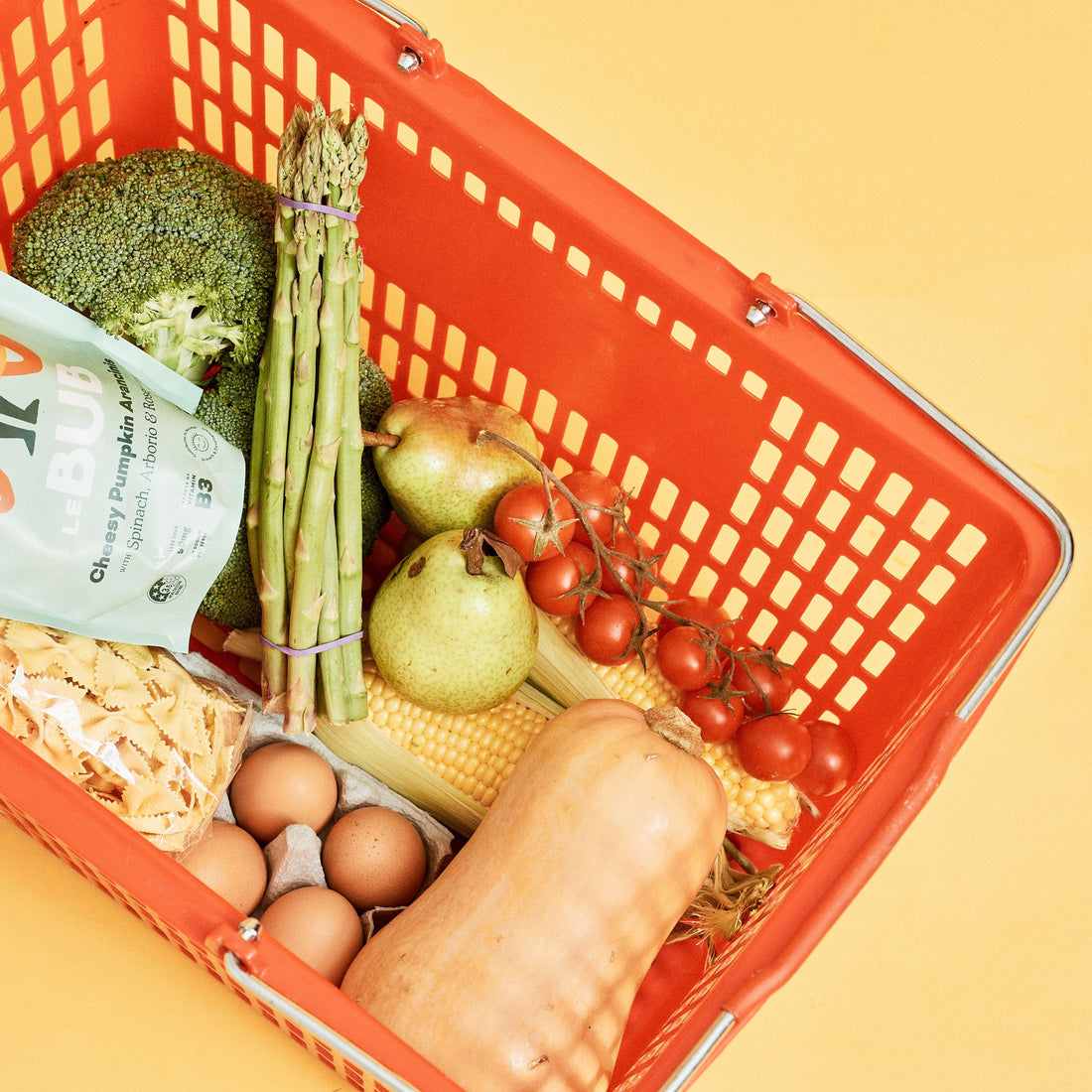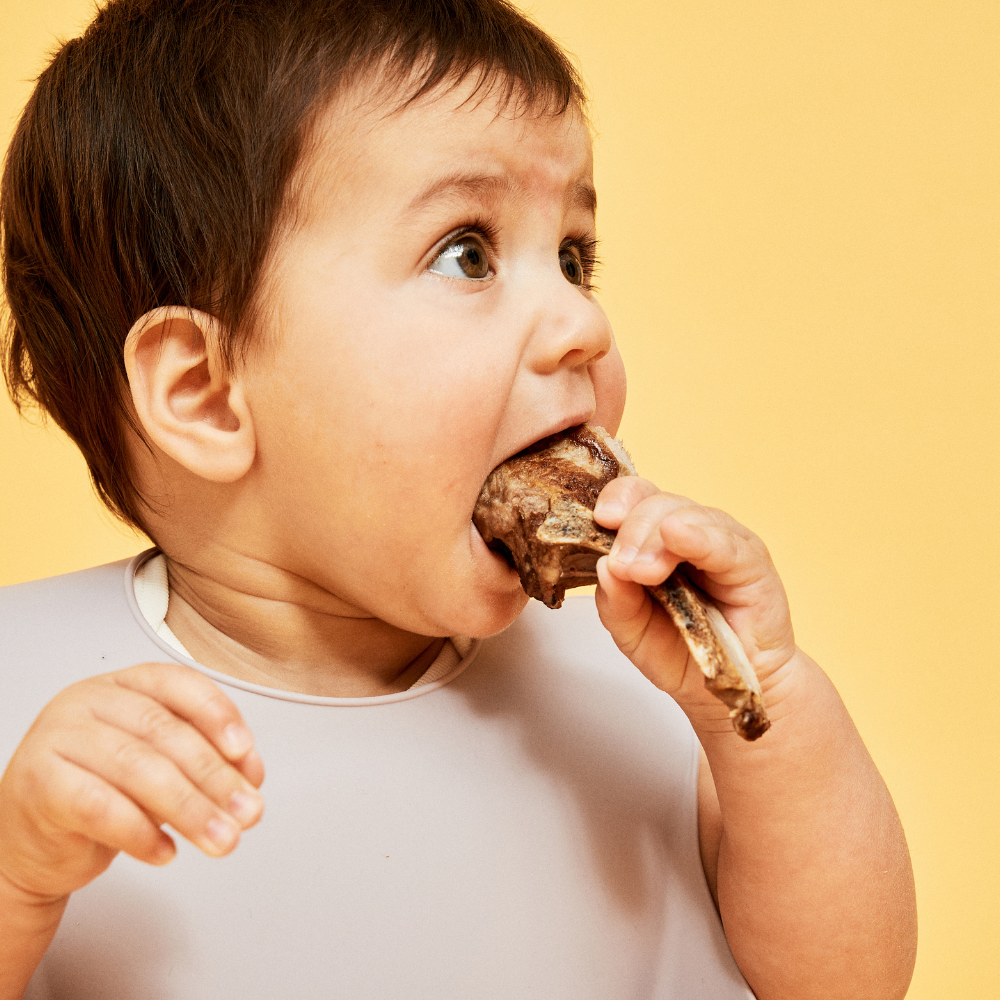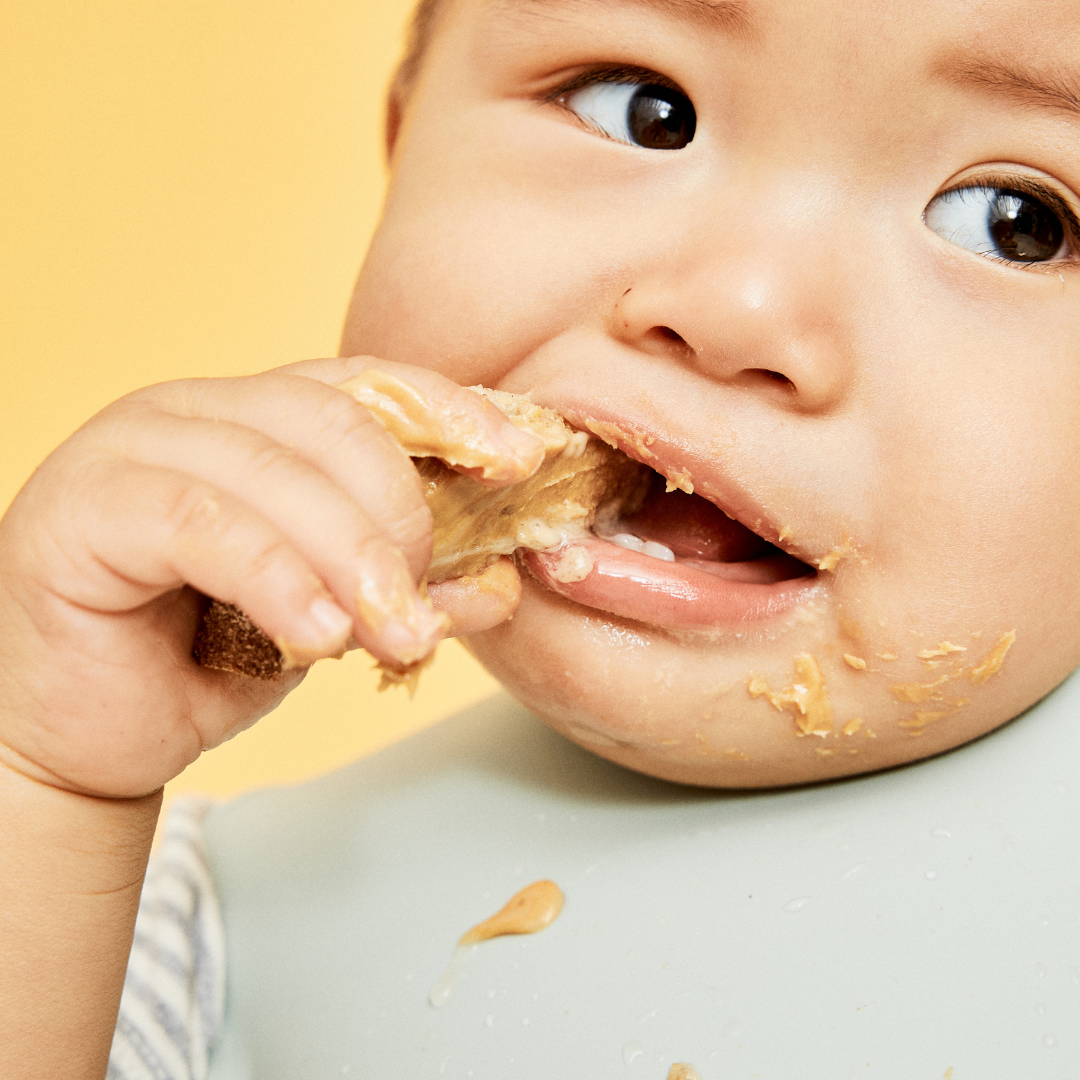

Now that they eat (and eat and eat) here’s what to make for them.
Now that your baby has started solids and has been chomping cucumber and slurping cereal for a few months, they’re ready for the next leg of their culinary journey, but WTF do you feed them? You want to ensure a nutritious balanced diet that creates lifelong healthy eating habits, but cooking for the adults of the household is already a lot. Add in separate baby meals, and that’s a real lot. To arm you with timesaving tips, tasty ideas and fail-safe feeds, we consulted our top baby food recipe books Food Babies Love by Emily Dupuche, and both Baby and Toddler Meal Planner and Weaning by Annabel Karmel. Get ready to be your child's very own Masterchef.
Baby Food Ideas: Keep the first-foods in your repertoire
Just because their palette has developed, doesn’t mean you can’t keep broccoli florets, carrot sticks, plain yoghurt and slices of avocado on the menu. Not every meal has to be complex. Sliced fruit or cooked single veggies are great, easy snacks when you’re short on time or planning to be out and about. Same goes for the humble two-egg omelette. It’s delicious, full of good fats and packed with that essential lunch-time protein.
Nothing ‘lite’
Babies need proportionally more fats than adults, so it’s important to introduce meat and cheese from six months. Always give them full-fat options when it comes to dairy, cook with good quality olive or coconut oil, and remember that while the rough guide is 1 cup of food per meal, babies come with a built-in self-regulator to manage their intake (lol, but really), so don’t worry too much about how much they are eating.
Freezer friendly? Amen
While you’re feeding a baby/toddler, it’s a great time to get friendly with your freezer. Most cooking endeavours will produce a lot more than your kid will eat in one serve, so whether it’s dumplings, croquettes, rissoles, falafels, risotto, curry, dhal, pesto, fritters or soup, plan to freeze individual serves and treat yourself some cute containers to store it in. Not only does this eliminate waste, but it means you always have something fresh and nutritious on-hand to serve your baby. It also means you can vary up their meals i.e. they don’t have to eat pumpkin risotto lunch and dinner three days in a row — you’d get over it, and so will they.

Baby breakfast ideas
Usually, this is the first meal that you and baby will be having the same thing (bar coffee, obvs).
- Wholemeal or multigrain toast (the processed white stuff lacks much nutritional value so steer clear) with peanut butter, Vegemite, cream cheese or avocado smash is a great fibrous start to the day (jam usually has a lot of sugar, and honey is on the “no” list because there’s a risk of infant botulism).
- Oats or Weetbix are fine and chia puddings or your own bircher topped with fruit are delish in the summer.
- Scrambled eggs
- Wholemeal pancakes
- The odd hash browns
- Fruit and yoghurt
Basically, you and your baby could go to town on a breakfast buffet!
Baby lunch ideas
Lunch is the time to give them their main serve of protein for the day. This is partly to help with their big midday nap, and partly because both babies and toddlers are crankier in the evenings, and it’s easier to get them eating more and trying new things when they’re in a better mood. When cooking for babies, don’t be afraid of adding herbs and spices, as Dupuche writes, “babies don’t like bland, they like what they know.” So you want a nutritious tasty meal, but you’re (likely) home alone with your baby and they need to eat before they nap. How to pull this off? Raid the freezer for whatever you prepared earlier. Clever you. Even if they’re out of the puree stage, Karmel recommends freezing pureed or grated vegetables to use as bases for pastas, risottos or omelettes that are easier to put together while your baby’s about. If the freezer is empty, grilled toast, couscous, a tofu salad, mini sandwiches, deconstructed burgers, French toast or omelettes make for easy wins.
Baby dinner ideas
To save your evening cooking load doubling, find recipes that are easily adapted for little ones, or something from their recipe books that can be given a little embellishment for adults. A lamb curry can be pepped up for the grown-ups with a little cayenne pepper, a home-made burger can be deconstructed for little hands and mouths, and spaghetti bolognese is a fantastic way to sneak-in extra veggies for everyone. Meat and veg dinners are easily adapted: just cut the vegetables into fingers or wedges instead of rounds or dicing, and use a mallet to really tenderise the meat before you cook it. Babies struggle with a chewy meat.






































































































